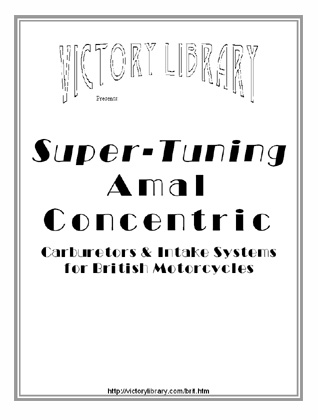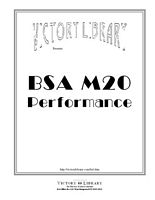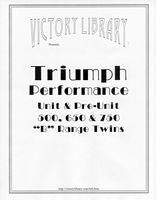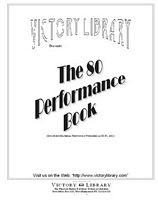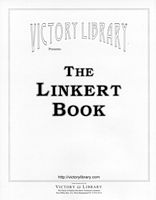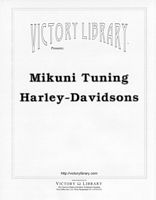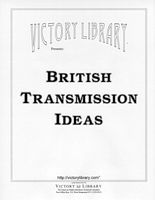Almost all Mopar engines were equipped with cast-iron intake manifolds, some of the obvious exceptions being some 6 Pack, Max Wedge and Hemi engines. They are still generally inferior to a good aftermarket aluminum manifold in terms of power (some much more than others), and impose a considerable weight penalty (almost 40 lbs. on an LA motor). Some advantages offered by typical iron manifolds are: |
Original appearance for restoration or “sleeper” |
Lower cost (in most cases) |
Lower underhood temperature |
Lower profile for hood clearance and air cleaner choices |
Retains exhaust cross-over and heat riser operation for cold-weather use |
Original A/C and accessory brackets fit properly |
Purpose
All iron manifolds can be substantially improved by porting. This includes modification of several separate areas; each can be done alone or in combination: |
The alignment of the carburetor throttle bores with the manifold's openings is frequently not exact. Slightly larger holes in the manifold are (in my opinion) harmless, but areas where the manifold obscures the actual throttle bore openings should be trimmed back to match the bores. I don't believe that an enlargement beyond that is helpful. Check by putting the carburetor back on the studs and shining a light down the bore (throttle fully open). Make sure the gaskets you will be using for the re-installation also align well with both the carburetor and manifold; sometimes turning them over or rotating 180° helps. |
The manifold's throttle bore openings are generally very sharp at the bottom, and end abruptly at the roof of the plenum. A 3/8” or larger radius here will help flow “make the turn” into the runners; this is especially helpful with shallow plenums, where the floor is very close to the carburetor base. Only 3 sides (270° roughly) need be done, as the “close” side is probably tangent to the plenum dividing wall. |
Do NOT use the gasket as a pattern, as it is probably larger than your existing intake ports in the head. A step (mis-match) here will ruin flow, and require either a new manifold, or take the heads off and open them up.
It's not that easy. You'll have to try to make a rubbing or impression on a piece of thin paper etc. of the head ports, then transfer it to the manifold, using the bolt positions for alignment. You can do each port separately if it's easier. Match the port openings to or slightly less than the impression size. The closest match should be at the top of the port.
If you wish, smoothly and gradually re-contour the runner passages as deeply into the manifold as you can reach, following the original curvature. Be very careful not to make the manifold ANY larger than the head - slightly smaller if you can't get it perfect. No polish, 180 grit (dull, smooth) finish is best.g ), and matching the port openings (where the manifold bolts to the heads) to or slightly less than gasket size. Do NOT use the gasket as a pattern, as it is probably larger than your existing intake ports in the head. |
Extrude-Hone is a commercial process which removes metal non-selectively from the interior of a manifold by forcing an abrasive slurry through under hydraulic pressure. It does remove irregularities in the wall surface, casting flaws, etc. but the enlargement cannot be "guided" (it does have some effect, but the abrasive does not necessarily follow the same path as the mixture). It's also very expensive, about $300.-400. for a manifold, plus shipping both ways. I'd leave this to maximum-effort projects that must still appear stock. |
Even the best cast-iron dual-planes have a lot of cylinder-to-cylinder distribution problems, partially due to differences in approach angle to the port, and partially due to different runner lengths, but the only way I know to try to match them is to have it flow-bench tested first to determine what each runner flows - $$. |
If you wish, smoothly and gradually re-contour the runner passages as deeply into the manifold as you can reach, following the original curvature. Be very careful not to make the manifold ANY larger than the head - slightly smaller if you can't get it perfect. No polish, 180 grit (dull, smooth) finish is best. |
Tools
The preferred tool is a die-grinder, Dremel, etc. equipped with a ¼” carbide or abrasive bit. An air die-grinder is fastest (also most likely to cause mistakes). An electric die-grinder is fine (Sears Craftsman Industrial model is an excellent buy for the money), just a bit slower. A Dremel is going to take longer due to the smaller motor. The best bits are carbide (don’t bother with “high-speed steel”, etc. as they will quickly become dull), and are available in a wide variety of shapes. I use a ¼” cylindrical bit for roughing out work. They’re expensive, but unless you drop it, it’ll last a long time and cut through iron like cheese. For small curves, radii, etc. you may find abrasive bits helpful; I use ¼” ball & ½” cone shapes. “Cratex” and abrasive cartridge rolls of various sizes are useful for finishing work (use low speed for these). You will not need finer polishing material than 320 grit, as a satin-smooth finish is adequate; if you can, a mirror polish reduces heat absorption. For best control, keep the speed down - this prevents the tool from bouncing and digging in. |
Safety
You must wear eye protection when doing this work, for obvious reasons. Be sure to use ear protection as well (shooting muffs, etc.). Wear a dust mask, abrasive dust is hard on the lungs. |
Layout
Begin with a clean port gasket surface. Cover it with a layer of duct tape; use a rolling pin, etc. to make sure it’s firmly attached. Make a tracing or impression of your intake ports in the heads, and very carefully position it on the manifold, being certain to line up the bolt holes all around. Transfer the outline to the manifold and clean up the interface to get a close match. , . Now, trace a line following the inside port surface of the gasket on all 4 ports. Cut through the tape along this line using the point of an Exacto, utility knife, single-edge razor blade, etc. Carefully peel back the tape inside the port opening, and discard. The remaining tape will offer good protection against accidents. If you prefer, use Dykem, etc., coating the cylinder top surface as per product directions. Spray paint may be substituted - lightly spray the top surface from directly above. Wait 5 minutes, then remove the gasket. In the case of Dykem, you now have a line separating the area needing work from the area that will be left “as-is” for now. If paint is used, only the painted area should be cut. You may still find it useful to apply duct or masking tape to the gasket surface to protect it from accidents. The area inside the gasket is not the absolute limit to the modification, but it’s a safe place to stop. |
Metal Removal
Remove metal with the carbide bit, using smooth strokes, from the edge of the existing port opening. Don’t try to get the whole bit into the port - a shallow angle is fine. Work right to the edge of the tape (or paint, etc.). Do the next port; don’t worry about the passage itself yet. |
The secondary bore openings on a dual-plane manifold are generally completely separated by the divider wall. The primary openings frequently have a notch in the wall connecting the left & right sides directly under the carburetor; this is to improve idle quality.
The manifold can be “tuned” to behave more like a single-plane by enlarging the notch both as to depth (down to the floor of the upper plenum) and length (the full length of the bore openings, front to rear). The larger the connecting passage, the greater the increase in carburetor area available to cylinders normally fed by the other side of the carburetor. Click to see my “Intake Manifold Comments” article for more details. This will also reduce off-idle throttle response and lean out low-speed mixture, requiring more accelerator pump shot and richer primary jetting, a higher vacuum power valve, smaller primary metering rod step, etc. |
Although you may wish to preserve, at least in part, the left-right plenum separation of a 180° dual-plane manifold, there is no reason to keep the primary and secondary throttle bore openings of the same side of the manifold separated. The metal between the primary and secondary bore opening on each side can be removed with a hacksaw or drill, then cleaned up with a die-grinder or Dremel. With a square-bore (Holley or Carter) manifold, the opening will be become a long oval; with a Thermo-Quad or Quadrajet manifold the shape will resemble a “figure 8”. This both helps the transition of gas into the plenum with fewer restrictions, allows the gas to slow down a bit, and also adds some plenum volume. |
Once one side of the manifold is done to the tape line, do the other side. |
When trying to decide how extensive to make your openings, remember that it is easier to remove metal than to put it back! The most frequently made mistake is doing the 1st few ports completely, and not having the patience to do the remaining ones to match it. Any porting at all is a big improvement, and the first metal you take off has the greatest effect. |
After you’ve gotten this far, you can try extending the new size deeper into the passages. Some will be easier to do than others, and some will obviously need more work. Just smooth the metal as much as possible, remove any obvious casting flaws, parting lines, etc. |
The longer-stemmed bits allow you to go deeper into the passages. Keep the speed down, as the length will cause chattering when pressure is applied. |
After doing all 8 ports, carefully inspect all passages for gouges, roughness, etc., and re-do problem areas. Are all port openings done equally? If you’re satisfied here, this is a good place to stop. Blow out the manifolds with an air hose, remove the tape or paint. |



